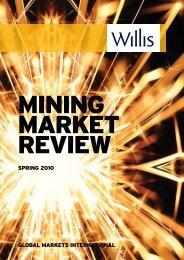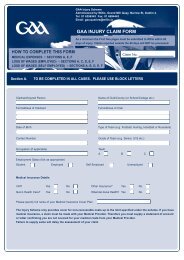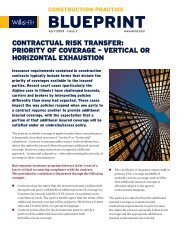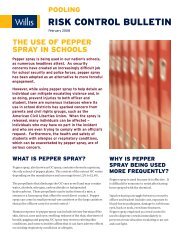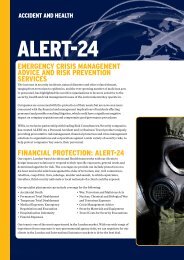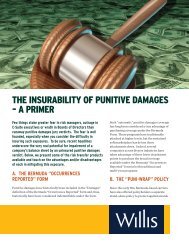spRING 2011 GlobAl MARKETs INTERNATIoNAl - Willis
spRING 2011 GlobAl MARKETs INTERNATIoNAl - Willis
spRING 2011 GlobAl MARKETs INTERNATIoNAl - Willis
You also want an ePaper? Increase the reach of your titles
YUMPU automatically turns print PDFs into web optimized ePapers that Google loves.
marIne<br />
CoMModity tRadiNg<br />
Perhaps more than usual in an average year, we have seen a number<br />
of factors, including good old fashioned harvesting results, combining<br />
to create a volatile market place. This contradicts the underlying<br />
fundamentals of speculative interest, seasonal impact, environmental<br />
upheaval and political motivation.<br />
As a result of the global economic downturn, we saw the prices for many<br />
commodities fall dramatically. The relatively modest exposure in Asia<br />
has certainly been a factor for the revival for certain commodities.<br />
Even with China trying to avert an overheated economy, its impact<br />
on the world’s raw material’s markets remain undeniably strong.<br />
Climate continues to have a far-reaching impact, causing sudden price<br />
hikes and unforeseeable volatility as the recent Russian wheat export<br />
bans and the impact on cotton prices following the flood in Pakistan<br />
amply demonstrate.<br />
Aside from the niche companies, many smaller-sized firms have ceased<br />
trading during the financial crisis. This has left the larger trading<br />
companies to buy up competitors, and diversify into the ownership of<br />
fixed assets such as refineries and mines. This provides them with a<br />
consistent supply of product without having to trade through the usual<br />
markets. The banks have an increasing influence, many of whom are<br />
now entering the commodity fields by providing cash for goods using the<br />
monetisation model.<br />
Companies seeking to gain the competitive edge are looking to more<br />
sophisticated financing options. Further interest is from hedge funds<br />
seeking to move away from higher risk financial instruments to<br />
counteract the impact of reduced margins.<br />
In insurance terms, we have seen a shift away from temporary FPSO<br />
storages towards more regular trading volumes. In spite of the relatively<br />
depressed price levels compared to the peaks registered in 2008, this<br />
class of insurance still attracts insurers’ attention: high insured limits<br />
are maintained but the perceived good loss experience in this class has<br />
resulted in a highly competitive market for this commodity.<br />
38 | <strong>Willis</strong> | Mining Market Review <strong>2011</strong><br />
" ComPanIes<br />
seekIng to gaIn<br />
tHe ComPetItIVe<br />
edge are<br />
lookIng to more<br />
soPHIstICated<br />
fInanCIng<br />
oPtIons"<br />
Metals (haRd CoMModities)<br />
The economic recovery has resulted in<br />
an overall increase in demand for metals,<br />
particularly from China. This has meant an<br />
inevitable increase in prices, especially for<br />
non-ferrous London Metal Exchange (LME)<br />
traded metals.<br />
The emphasis for insurance remains on the high<br />
limits and capacity required for storage and<br />
the risk of misappropriation. However, there is<br />
a strong market for these products and, in the<br />
absence of any major losses, rates are likely to<br />
remain low.<br />
With the world slowly moving out of recession,<br />
the insurance markets continue to view<br />
commodities as an attractive opportunity.




